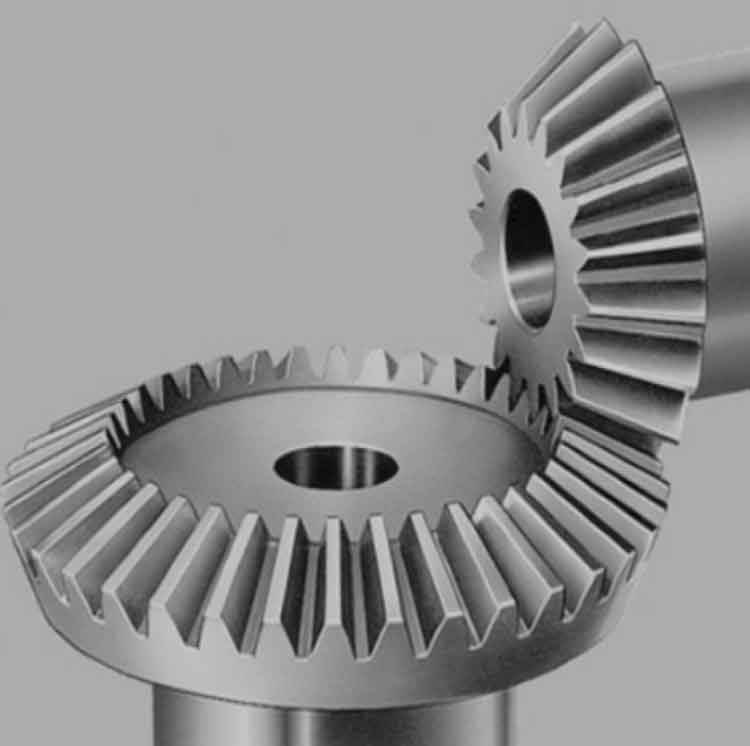
Straight bevel gears are a type of bevel gear with straight teeth that are cut directly across the gear’s face. They are used for transmitting motion and power between intersecting shafts at a right angle. Unlike spiral bevel gears, which have curved teeth for smoother meshing, straight bevel gears have teeth that form a straight line across the gear face. Here’s an introduction to their principles and applications:
Principles of Straight Bevel Gears:
- Tooth Profile: Straight bevel gears have straight teeth that are cut at an angle to the gear’s axis. The teeth are tapered from the larger end to the smaller end, allowing them to mesh with each other at a right angle.
- Axial Thrust: Straight bevel gears generate axial thrust forces along the gear shafts due to the contact between the mating gears. This thrust must be properly accommodated to prevent excessive axial loads on bearings.
Applications of Straight Bevel Gears:
- Automotive: Straight bevel gears are commonly used in automotive differentials to transfer torque from the driveshaft to the wheels. They allow the wheels to rotate at different speeds when cornering, ensuring smooth and controlled handling.
- Industrial Machinery: Straight bevel gears are found in various industrial applications, such as power transmission in gearboxes, conveyors, and machine tools. They are used in situations where a right-angle power transfer is required.
- Hand Tools: Straight bevel gears can be found in hand tools like hand drills and power saws, where they transmit motion from the motor to the tool’s cutting mechanism.
- Marine Applications: Straight bevel gears are used in marine propulsion systems, transmitting power from the engine to the propeller shaft to drive the vessel forward or backward.
- Farm Equipment: Straight bevel gears are employed in farm machinery such as tractors, combine harvesters, and plows to transmit power from the engine to various moving parts.
- Printing Industry: Straight bevel gears are utilized in printing presses to transfer power between rollers and other printing components.
Advantages of Straight Bevel Gears:
- Simplicity: Straight bevel gears have a straightforward design with teeth cut directly across the gear face, making them relatively simple to manufacture and maintain.
- Efficiency: Straight bevel gears have less sliding action compared to worm gears, resulting in higher efficiency and reduced heat generation.
- Cost-Effectiveness: The simplicity of the straight bevel gear design often makes them more cost-effective to produce than other gear types.
Limitations of Straight Bevel Gears:
- Noise and Vibration: Straight bevel gears can produce more noise and vibration during operation compared to spiral bevel gears, which have smoother meshing.
- Axial Thrust: The axial thrust generated by straight bevel gears can be a design challenge that needs to be properly addressed in gear systems.
Overall, straight bevel gears are versatile and widely used in various applications where a right-angle power transfer is required. Their simplicity, efficiency, and cost-effectiveness make them a popular choice in many industries. However, in situations where noise, vibration, and axial thrust are critical considerations, alternative gear types such as spiral bevel gears may be preferred.
